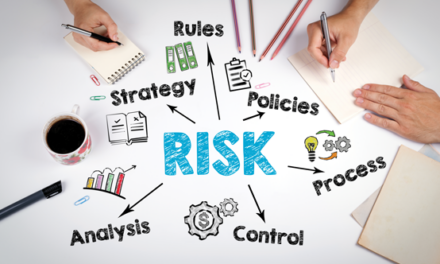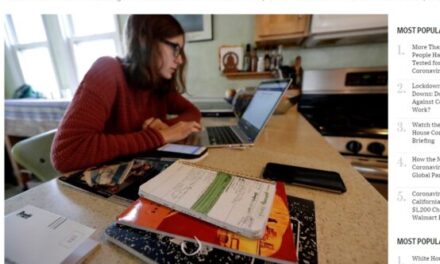After COVID-19, we must embrace a whole-child approach to preK-12 education.
As this issue of Kappan goes to press, the number of coronavirus cases in the U.S. is approaching 4 million, including more than 145,000 deaths. Already, we have lost jobs by the millions, and every day we get fresh updates about the grim possibilities that could lie ahead (Yong, 2020). Like 330 million other Americans, I worry constantly about my family, friends, and neighbors. And like most people, I keep one eye glued to the TV news, trying to stay well-informed without letting the talking heads drive me to distraction.
But I also keep one eye on my work at the University of South Carolina, where I am part of ALL4SC, a recently launched effort to marshal this institution’s extraordinary wealth of resources — from our research facilities to our engineering centers to our programs and faculty in education, medicine, music, and on and on — to support high-need public schools throughout our region, particularly in the state’s rural areas. Our goal, with support from our university president and 12 academic and professional deans, is to build a truly comprehensive system of whole-child education, touching on everything from prenatal care to academic tutoring and near-peer mentoring, after-school enrichment, and workforce development, as well as innovations in teacher leadership and a reinvented teaching profession.
If you’ve been in education as long as I have, then you know there’s nothing new about calling for better cross-sector collaboration among schools, universities, nonprofit organizations, and others. But ours is a particularly ambitious effort. We aim not just to emulate the most successful practices in the field — such as the remarkable work underway at the UCLA Community School and the Netter Center at the University of Pennsylvania — but to push the envelope and find new ways for our university to serve as an anchor institution for our local communities, tapping any and all of our available assets to benefit the public good.
For far too long, our country has devoted far too few resources to meeting the needs of its children. We’ve known for years, for example, that close to half of the students in our nation’s schools have been exposed to potentially traumatic events such as domestic or neighborhood violence, household mental illness, abuse, or neglect. And over the last decade and a half, young people’s levels of happiness, as measured by researchers, have dropped precipitously (Twenge, 2019).
Suddenly, it’s not just the directors of community schools who insist that the whole child matters.
But now that we’re in the thick of the COVID-19 crisis and we see children struggling with an ever-growing list of needs — for food, housing, medical care, physical safety, emotional support, mental health services, tutoring, and much more — my colleagues and I are even more convinced that a systemic approach to whole-child education is indispensable, and not just in the short term. To accelerate our economic recovery and address gross health disparities in the wake of the pandemic, we will be obligated to pursue a Zero-to-Workforce strategy, from early childhood to higher education.
Impact, response, and a silver lining
There is a lot we don’t know about COVID-19 and the long-term impact it will have on this country. But it is clear already that it is having a particularly devastating effect on rural communities like Fairfield County — a partner in ALL4SC’s work — where most students are food insecure, many of its citizens are immunocompromised, and income inequality and unemployment rates are among the highest in the state.
Since the beginning of the pandemic, we have been racing to figure out how best to continue our design work with local educators and community leaders and with our university faculty and students. At the same time, our Fairfield colleagues have been consumed with the task of feeding 2,600 students, while also trying to address acute social, emotional, and academic needs, in a county that is spread across 700 square miles. It has been remarkable to see how quickly the district, led by Superintendent J.R. Green, has organized and delivered both meals and instructional packets to students and their families, while also deploying Wi-Fi-equipped school buses throughout the county (which are necessary, as J.R. reminds me, due to the digital divide that persists across his rural community, leaving more than 50% of the district’s students with no internet access at home). Given the need for social distancing, students cannot board the buses, of course, and if somebody can drive them to a mobile hot spot, then they need to sit in their car while connecting with their teachers and downloading lessons. This is not exactly conducive to tech-enabled personalized learning.
From all parts of the country, reports keep coming in about heroic efforts by educators to meet their students’ needs in spite of the closure of their schools. Even after so many years of being told to focus so much of their attention on high-stakes accountability measures, teachers and administrators everywhere understand that their first priority isn’t to keep up with the district’s pacing guide or reschedule a practice test — the priority is to reach out to students, check in on them and their families, and support them as whole children, not as test takers.
If there is a silver lining to be found in all of this, it is that the crisis has required educators to look to partners who can help them address their students’ many needs. Suddenly, it’s not just the directors of community schools who insist that the whole child matters. Given what we face today, it goes without saying that we should all — schools, universities, local government agencies, nonprofits, religious organizations, and others — contribute our time, talent, and treasure to the work of teaching, learning, and caring. This is the raison d’être of ALL4SC, and I am optimistic that it will be one of the pandemic’s lasting lessons. My hope is that:
- COVID-19 will make us more aware of the importance of integrated student support systems (that draw on academic, social, emotional, and physical health data) to serve the whole child.
- COVID-19 will make us see that if teachers are to provide such support, they must have more time to work with each other and with helping professionals outside the school.
- COVID-19 will help us better understand the proper role of online, 24/7 learning environments, spurring innovations for more accessible, equitable, and personalized system of education from preK to career and college (Avallone, 2020).
- COVID-19 will inspire us to reorganize people and programs in our school districts, universities, and community organizations to work together more effectively to teach, heal, and mentor young people.
- COVID-19 will inform policy leaders as to how government and the private sector can fuel the kind of cross-sector collaboration, from birth to workforce, that must be in place to educate everyone in the future.
- COVID-19 will close the door on two decades of top-down preK-12 education policies, which have focused on standardizing curriculum, intensifying test-based teacher evaluation, and forcing public schools to compete for students through an array of charter school and voucher policies. It had already become clear that these “blunt imperatives” have not succeeded on their own terms (that is, academic achievement continues to lag, according to the National Assessment of Educational Progress ), and now it is also becoming painfully obvious just how blind they have been to the broader needs of students and the educators who serve them.
Never let a crisis go to waste
The old adage, “Never let a crisis go to waste,” seems apt at the moment. In unprecedented times like these, when things are perilous for so many, we need our policy makers, school reformers, and educators to seek solutions outside the usual places. Students and families clearly need more than our public institutions have been in the habit of providing.
Of course, some policy leaders and school reformers made the same point in response to the devastation of Hurricane Katrina, which hit the Gulf Coast in 2005. Katrina’s silver lining, they argued, was the opportunity it created to remake the New Orleans education system, which had long been mired in financial woes, poor test scores, and rampant student discipline problems. What happened next has been well-documented: The school district was replaced by charter schools; experienced, older teachers from the community were fired and replaced by inexperienced recruits from other places, and the homegrown curriculum was traded in for lock-step instructional pacing guides and no-excuses school models.
For a while, some researchers and advocates claimed success, noting that math and reading scores were rising faster in New Orleans than in other Louisiana parishes affected by Katrina, and that the city’s high school graduation rates were rising sharply (Brown, 2015). However, the latest statewide school report card gave 49% of the city’s charter schools a D or F rating (Ravitch, 2020). Overall, New Orleans’ schools are below average in the state, which is itself one of the nation’s lowest-performing education systems. In her poignant 2013 book Hope Against Hope, the reporter Sarah Carr chronicles how the crisis of Hurricane Katrina served as a catalyst for school improvement in some places but not in others. Her conclusion: The school reforms that dominated New Orleans in the years after the storm gave too much authority to “a band of well-educated outsiders [who stepped in] to impose their expertise” and who ignored the trauma and poverty that affected so many children who attend the local schools.
Let’s hope we’ve learned something from New Orleans. Post-Katrina school reforms taught us how important it is to work with those who live in the communities we aim to serve. Let’s all focus on educational transformation from the inside, not disruption from outside. And let’s come together to reignite the social purpose of public education.
Already, we’ve learned a lot from educators in South Carolina, too: In early June 2020, we surveyed every teacher in the state to better understand how they interacted with students once schools were closed, what teaching tools they used, what stresses they’ve had to cope with, and what kinds of support they’ve received. More than 12,000 teachers (one-fourth of the state’s total teacher workforce) responded, and we conducted follow-up interviews with a representative group of 75 of them.
We found that while South Carolina teachers were deeply committed to making a successful shift to remote instruction in the spring, many struggled to reach and teach their students in what became “emergency instruction,” and those teaching the most vulnerable students struggled the most. And yet, when they realized they no longer had to worry about pacing guides and high-stakes testing, some teachers also saw opportunities for creativity and leadership, choosing to focus on parent and family engagement, student-centered learning, and improvements to the curriculum.
As we think about our priorities for public schooling in the aftermath of COVID-19, these teachers’ recommendations offer a good place to start. The goal should be to pursue a new kind of community schooling, in which:
- Internet access becomes universal for every student.
- Personalized learning is the norm.
- Universities and school districts combine their resources, people, and programs to boost students’ college and career readiness and life chances.
- Authentic performance assessments are used at scale to remake accountability and transform the way student and school progress is measured.
- PreK-12 teachers lead their own professional learning through affinity networks and in collaboration with university faculty and students.
- Educators and other helping professionals work together to address the challenges they face and the innovations they seek.
I am hopeful that COVID-19 will spur us in these directions, toward the coherent and effective system of teaching, learning, and caring that our nation needs now more than ever.
References
Avallone, A. (2020, March 20). Supporting our learning communities in a time of crisis. Friday Focus: Practitioner’s Guide to Next Gen Learning. San Francisco, CA: Next Generation Learning Challenges.
Brown, E. (2015, September 3). Katrina swept New Orleans’ school system, ushering in new era. The Washington Post.
Carr, S. (2013). Hope against hope: Three schools, one city, and the struggle to educate America’s children. New York, NY: Bloomsbury Press.
Ravitch, D. (2020, February 1). The education reform movement has failed America. We need common sense solutions that work. Time.
Twenge, J. (2019, March 20). The sad state of happiness in the United States and the role of digital media. World Happiness Report. New York, NY: United Nations Sustainable Development Solutions Network.
Yong, E. (2020, March 25). How the pandemic will end. The Atlantic.
Citation: Berry, B. (2020, April 13). Teaching, learning, and caring in the post-COVID era. KappanOnline.
ABOUT THE AUTHOR

Barnett Berry
BARNETT BERRY is a research professor at the University of South Carolina and co-leader of the Accelerator for Learning & Leadership for South Carolina .










